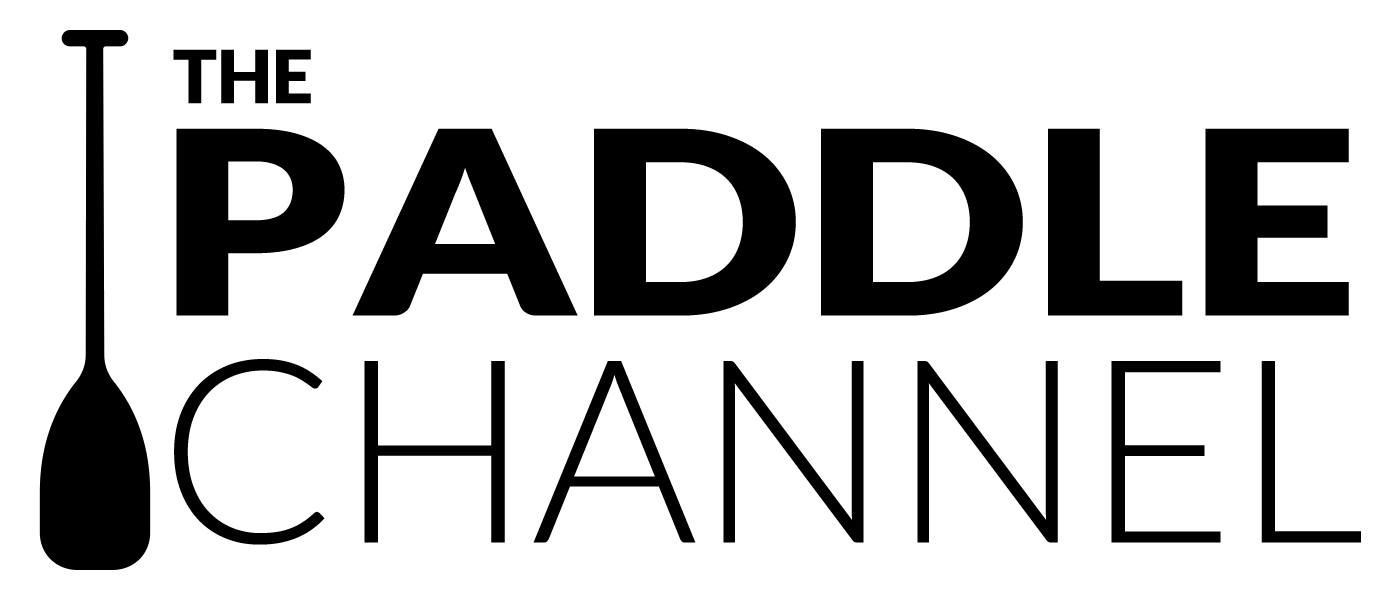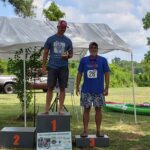Breakthrough workouts are an essential factor in your paddling training plan. To get the most benefit from these important workouts, you need to understand to how to use them to perform your best on race day.
What is a breakthrough workout?
Breakthrough workouts are typically hard workouts that help you break through to a new level of fitness and performance. In our paddle training plans, it’s usually pretty easy to tell which key workouts each week are your breakthrough workouts – they are the workouts that are going to leave you feeling tired the next day. You should feel the need to recover the day after.
Simply put, a breakthrough workout is a workout that has a strong training effect.
It’s probably no surprise that breakthrough workouts are key to your SUP racing and outrigger canoe racing progression, so it’s important to understand how to use them. These ten tips should help.
1. Understand the purpose
As you progress through your training plan, you should start each week by studying the week’s key workouts to determine your training goals for the week.
This may vary depending on the phase of training you’re in. For example, during your Base phases, where your primary goal is to build aerobic endurance, your key workouts may be designed to boost your mileage. A long paddle of moderate effort could be a breakthrough workout here.
During your Build phases, breakthrough workouts tend to focus more on building muscular endurance and race speed. An intense set of intervals could be a breakthrough day.
During the workout, envision the purpose of the training phase and focus on that.
2. Schedule wisely
To break through to new levels of performance, you need to be smart about scheduling your training days.
- Unless you’re training specifically for a stage race, where you’ll be racing day after day, don’t schedule your breakthrough workouts on consecutive days.
- Unless you’re training specifically for a stage race, the workout after the breakthrough workout should be an easy one.
Easy days are as important to optimal race performance and fitness as the hard days. They promote recovery and prepare you physically and mentally for the next breakthrough day.
So, when possible, try to insert an easy day of paddling between hard days.
- Go into your next breakthrough workout rested.
Clearly, this is an extension of the points above, but you also need to pay attention to other factors when planning your training week. If you have a big deadline due Friday and you think you’ll be up all night to meet it, then Friday may not be the best day for a breakthrough workout.
3. Practice racing
Breakthrough days are great opportunities to “practice racing.” Every breakthrough day is an opportunity to learn something you will use on race day.
Nutrition and Hydration
On your longer breakthrough days, you should be dialing in your nutrition and hydration. These are things you should have perfected during your Base phase of training. By the time you are a couple of months into your training plan, you should already know what your nutrition plan is for race day, how you’re going to carry your nutrition, how you’re going to take it in, etc.
Clothing & Gear
When possible, use breakthrough days to break in your racing attire and any other gear you’ll be using on race day.
Clothing can behave differently in different situations, and believe me, it is NO fun to find out your favorite pair of boardies, while comfortable on a short easy paddle, tend to chafe once you start working hard.
By “practicing racing” with your race day clothing and other gear during your training, you can avoid being too hot, too cold, too wet, too sunburned, too blistered, etc. on race day It seems common sense, but you’d be surprised how many paddle athletes use race day to “try something new,” or try to determine these details during the week or two before the big race.
Conditions
When possible, try to simulate race conditions in your training. If you’re training for an ocean race, you need to do as many workouts as possible on the ocean. If tricky inlets are part of your big race, schedule some breakthrough days in the inlets. If buoy turns are required, build buoy turns into your breakthrough days. It’s important to simulate the challenges of your particular race into your breakthrough days — doing a buoy turn while relaxed and chatting is very different from doing them in a race when you’re going hard.
4. Practice Strategy
Breakthrough days give you the opportunity to perfect your own strategies and practices for race day while under stress. Don’t throw way that opportunity!
For example, one of our OC1 paddlers this past week was practicing his optimal number of strokes he should take before changing sides. The best number for him while working under stress is different from the optimal number during a long, easy paddle.
Also important is practicing the mental game of going hard. In many cases, our main limiting factor on race day is the mind, not the body. The mind starts playing games, and, let’s face it, going hard can hurt. By practicing mental strength during your breakthrough workouts, you’ll be stronger on race day.
By “practicing racing,” you’ll develop the mental game AND the muscle memory required to perform well on race day. Keep that in mind.
5. Practice tapering
Tapering is the practice of decreasing training volume before a priority race. This gives your mind and body the opportunity to rest up for race day, and, if done properly, to sharpen race performance. The taper (or peak, and it’s sometimes called) is essential to optimal race performance.
However, if you spend a little time around endurance sports, you’ll hear many tales of athletes who don’t respond well to the taper. Their bodies are accustomed to a certain amount of training volume, and the decrease in volume leaves the body (and mind) a little unsure of what to do and can result in lethargy and/or illness.
However, you can avoid tapering pitfalls by using using the days before and after your breakthrough workouts to practice “mini-tapers” and your recovery routine. Find out what works best for you in training, and you’ll avoid any big surprises right before your race.
Many athletes are tempted to try something new in the last few weeks before their race, but you, since you’ve been using your breakthrough workouts to see what gives you the best performance and the best recovery, you will simply continue what you’ve already learned. The regularly scheduled “Rest & Recovery” weeks in our training plans are also great opportunities to practice your best tapering practices, by the way.
We strongly encourage athletes to use a training log to record what works best, what’s going on before and after your breakthrough days, what helps you recover best, etc.
6. Have a goal
Your goal: to break through, to do something you’ve never done before (or at least, something you haven’t done in a while).
What’s the goal of your next breakthrough workout? Is is to go faster, to go harder, to do more intervals, to go further? Is it to challenge yourself by paddling in conditions you might encounter on race day (like paddling in the ocean, big wind, choppy water, waves, etc)?
This is closely related to point 1 up there, but it’s important to approach each breakthrough workout with a goal in mind. For example, if you’re training for an ocean race and you’re an inland paddler, schedule your breakthrough day on the day of the week with choppier water.
7. Be consistent
Breakthrough workouts only work if you’re training consistently. If you skip training for weeks, then go out and do a 30-miler, or a series of 10 one-mile hard intervals, this won’t do much for your fitness. In fact, it increases your chance of injury.
Be consistent with ALL the workouts on your training plan, the easy ones and the breakthrough workouts, and you’ll perform better.
8. Be strategic
You can “break through” too often, Which is why a plan is good. It might seem like a good idea to try to make every workout a breakthrough workout, but in reality, that approach is more likely going to “break you.”
Injury, mental burnout, physical fatigue, overtraining, and decreased performance are all risk factors associated with overdoing the hard stuff.
Trust the schedule, trust your plan.
9. Use group paddles
Depending on the mentality of your paddling buddies, group paddles can be used as breakthrough workout during certain phases of training.
Often, group paddles fall into one of two categories: The Hammerheads (the group that turns every paddle into an all out race) and the Socialites (the group that turns every paddle into a sightseeing and social event).
Both groups can be very beneficial to your training, if used correctly. We recommend staying away from the Hammerheads during the early phases of your training plan, but you should start hanging out with this crew late in your Base 3 phase, and definitely during your Build phases.
It’s okay to substitute a Hammerhead group paddle for one of the breakthrough workouts in your plan during these phases. Just be smart and don’t make too big a jump.
Socialites paddles are great for recovery days in any phase of training. Use them to promote recovery and spread the stoke, to teach and learn from others, and to just enjoy paddling. Clearly, you don’t want to go on a Socialite paddle on your breakthrough days.
10. Be smart
Breakthrough days are stressful. They should be. That’s how you “break through.” You should go into each breakthrough workout feeling rested and ready to go, so be smart. Be honest with yourself, and if you’re not ready, it’s okay to postpone or even skip the breakthrough workout for the day.
If you find you’re doing this often, it might be time to reduce volume, or to use a plan designed specifically for slow recovery athletes. Otherwise, learn from the day, determine why you’re not ready, and adjust accordingly to be ready for the next one.

